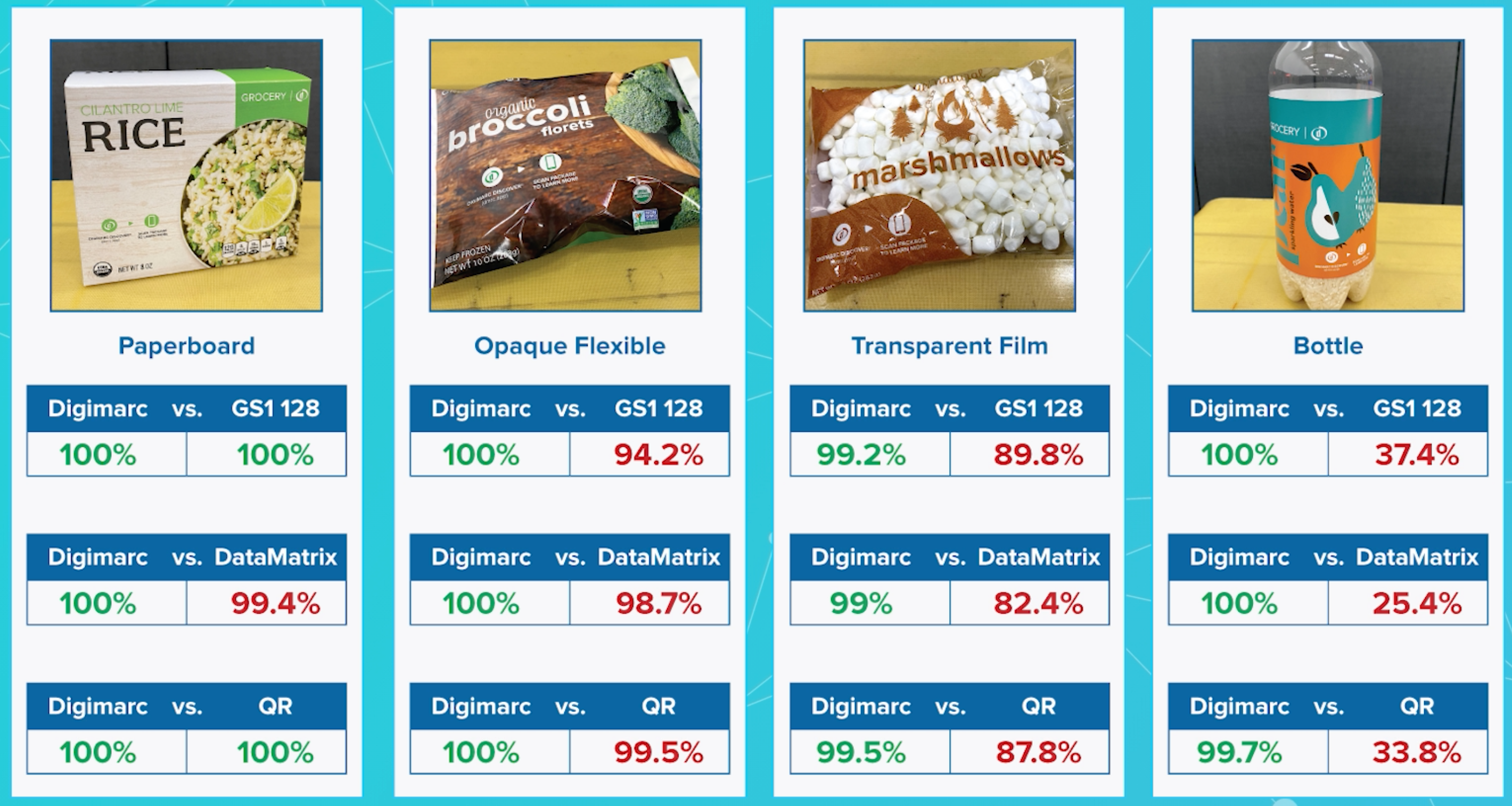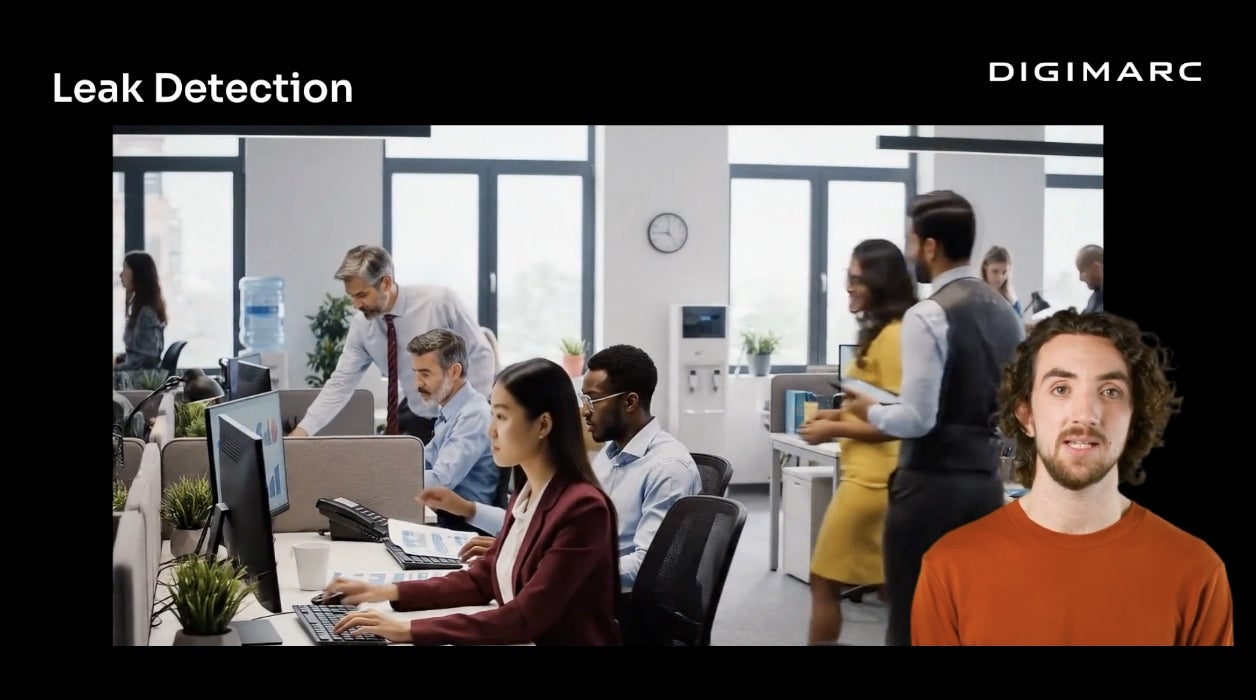February 15, 2024
The buzz surrounding digital watermarks to differentiate human-generated content from that which is created through artificial intelligence (AI) also serves to elevate the tremendous value watermarks can bring in the physical realm, particularly on product packaging. Nowhere is this value more evident than in industrial settings, where the risks are real and the limitations of conventional 1D and 2D product identification codes are felt most acutely.
Value Across the Package Lifecycle
The use cases for watermarks in this context are many and span the typical lifecycle of a package. They include automating control checks to prevent incorrect matching or mislabeling of finished product components, increasing the speed and accuracy of manufacturing, fulfillment, and distribution of packaged goods, and improving the identification and sortation of packaging materials after they’ve been used and disposed of by consumers.
These challenges are not just a matter of added costs and lost efficiency. For example, several food brands have been forced to recall products after labeling mix-ups have resulted in failing to properly disclose allergens including soy, wheat, or peanuts on packaging. Unfortunately, such mistakes can have tragic consequences.
Why Traditional Data Carriers Fall Short
The reality is that in busy manufacturing settings where products are filled and sorted at breakneck speeds, the margin for error is razor thin and the limitations of conventional 1D and 2D data carriers are becoming more obvious. DataMatrix has proven particularly popular since they are small and can fit onto smaller components where a conventional barcode or QR code would be too large. Besides drawing ire from brands who hate marring their package designs with ugly markings that take valuable space, the data carrier must remain oriented toward the camera or inspection systems in place to read them, a level of precision that is unrealistic across many packaging types and in highly industrialized environments where products aren’t able to be so consistently positioned as they move at high speeds.
Enter Digital Watermarks
A digital watermark carries product data just like a QR code or DataMatrix code. The key difference is that digital watermarks are imperceptible, allowing them to be applied ubiquitously on packaging without visually degrading the artwork. The result is a package that looks completely normal to a human while carrying a robust digital signal for an inspection system. It would require dozens of QR or DataMatrix codes across the surface of a package to achieve the same digital fidelity.
To help demonstrate the performance of various data carriers, Digimarc and Olympus Controls conducted an impartial study that compared scan rates on a typical production line of conventional barcodes, QR codes, DataMatrix codes, and Digimarc digital watermarks across a variety of packaging types. Not surprisingly, all the data carriers performed well with standard paper cartons and flexible packaging. However, the testing revealed stark differences when transparent film and cylindrical labeled bottles were introduced. Read rates for conventional barcodes, QR codes, and DataMatrix plummeted, especially on the bottles, while digital watermarks continued to be positively identified on nearly every product that went by the scanner.

What About Image Recognition?
One common question that arises is whether advancements in image recognition have rendered on-package data carriers obsolete. There is no doubt image recognition has advanced significantly in recent years (as anyone on Facebook or Instagram can attest). But the technology suffers three significant shortcomings that greatly limit its utility in this context.
The first is that image recognition relies on probabilistic identification, meaning it makes an educated judgement on what something is or is not. And it only takes one wrong decision to create a world of downstream problems – like recalling products containing undeclared peanuts.
The second issue speaks to how misidentification occurs. The packaging on different product SKUs can look remarkably similar. Consider products that have reduced fat or gluten-free versions, where the only difference to the packaging might be a very small design or copy change. It’s a tall order to ask even the most advanced camera systems to pick up on such subtle visual differences when products are whizzing by at speeds of a hundred or more items per minute.
A third factor is cost of ownership. The effort and expense of setting up a vision system to read digital watermarks is considerably less than one built around image recognition, which requires a massive amount of ongoing systems training to maintain accuracy.
Unleashing the Power of Digital Watermarks
While this article has focused mainly on the benefits of digital watermarks in industrial settings, it’s worth noting that perhaps the biggest advantages of digital watermarks over other types of codes is their adaptability across various environments and purposes. Please be aware that NOT all digital watermark solutions can fulfill this promise, and it’s best to be mindful of these distinctions as the market becomes inundated with new, often inferior digital watermarking options.
Digimarc digital watermarks connect to the Digimarc Illuminate Platform, where they retrieve data and receive logic. Cloud-connectivity eliminates limitations to payloads, bit capacities, identifiers, and data structures. The versatility and connectivity allow digital watermarks to adapt based on context, purpose, and permissions. That means the same digital watermark that delivers better identification and scanning speeds in a production setting can also be used by a brand inspector to determine whether a product is authentic or used in a retail store to automate the checkout process. One digital watermark, many applications.
